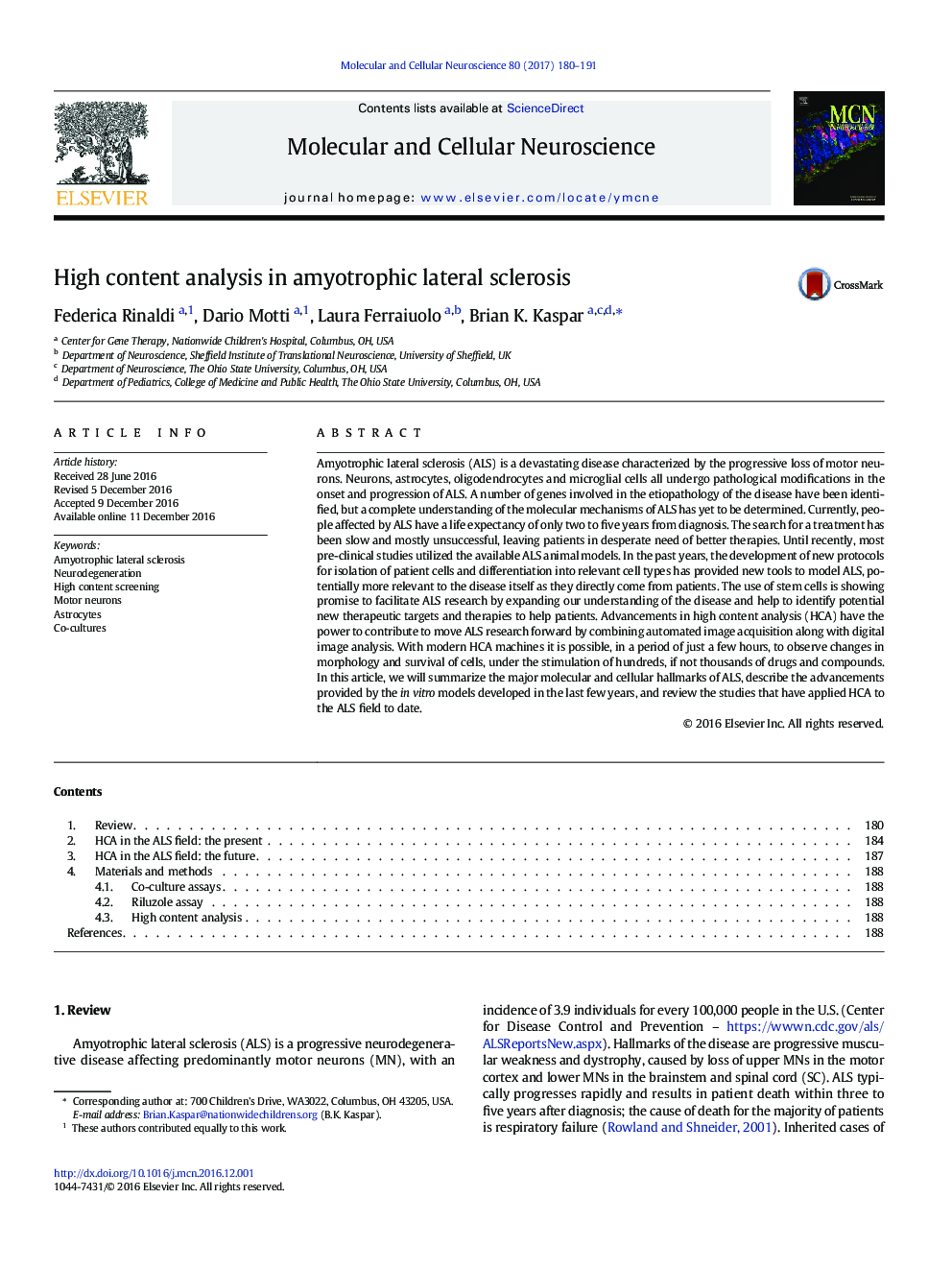| کد مقاله | کد نشریه | سال انتشار | مقاله انگلیسی | نسخه تمام متن |
|---|---|---|---|---|
| 5534392 | 1551126 | 2017 | 12 صفحه PDF | دانلود رایگان |
- There are limited therapeutic options for ALS.
- HCA has been applied to cellular models of ALS demonstrating the potential of the technology.
- Patient derived cells offer the potential to derive specific cells involved in ALS such as neurons and glial cells.
- Advances in ALS patient-derived models opened the door to high throughput applications to identify potential therapies.
Amyotrophic lateral sclerosis (ALS) is a devastating disease characterized by the progressive loss of motor neurons. Neurons, astrocytes, oligodendrocytes and microglial cells all undergo pathological modifications in the onset and progression of ALS. A number of genes involved in the etiopathology of the disease have been identified, but a complete understanding of the molecular mechanisms of ALS has yet to be determined. Currently, people affected by ALS have a life expectancy of only two to five years from diagnosis. The search for a treatment has been slow and mostly unsuccessful, leaving patients in desperate need of better therapies. Until recently, most pre-clinical studies utilized the available ALS animal models. In the past years, the development of new protocols for isolation of patient cells and differentiation into relevant cell types has provided new tools to model ALS, potentially more relevant to the disease itself as they directly come from patients. The use of stem cells is showing promise to facilitate ALS research by expanding our understanding of the disease and help to identify potential new therapeutic targets and therapies to help patients. Advancements in high content analysis (HCA) have the power to contribute to move ALS research forward by combining automated image acquisition along with digital image analysis. With modern HCA machines it is possible, in a period of just a few hours, to observe changes in morphology and survival of cells, under the stimulation of hundreds, if not thousands of drugs and compounds. In this article, we will summarize the major molecular and cellular hallmarks of ALS, describe the advancements provided by the in vitro models developed in the last few years, and review the studies that have applied HCA to the ALS field to date.
Journal: Molecular and Cellular Neuroscience - Volume 80, April 2017, Pages 180-191
